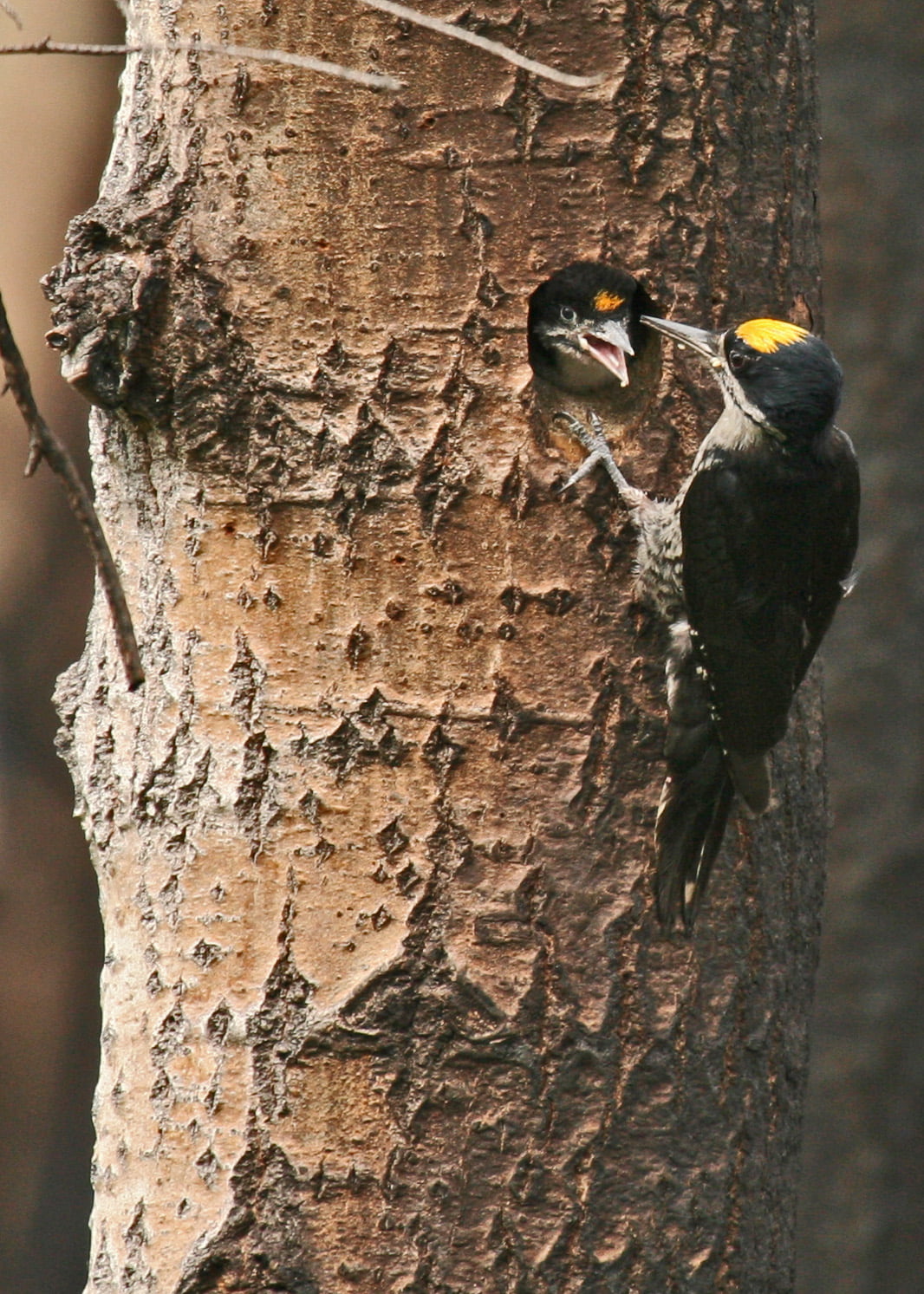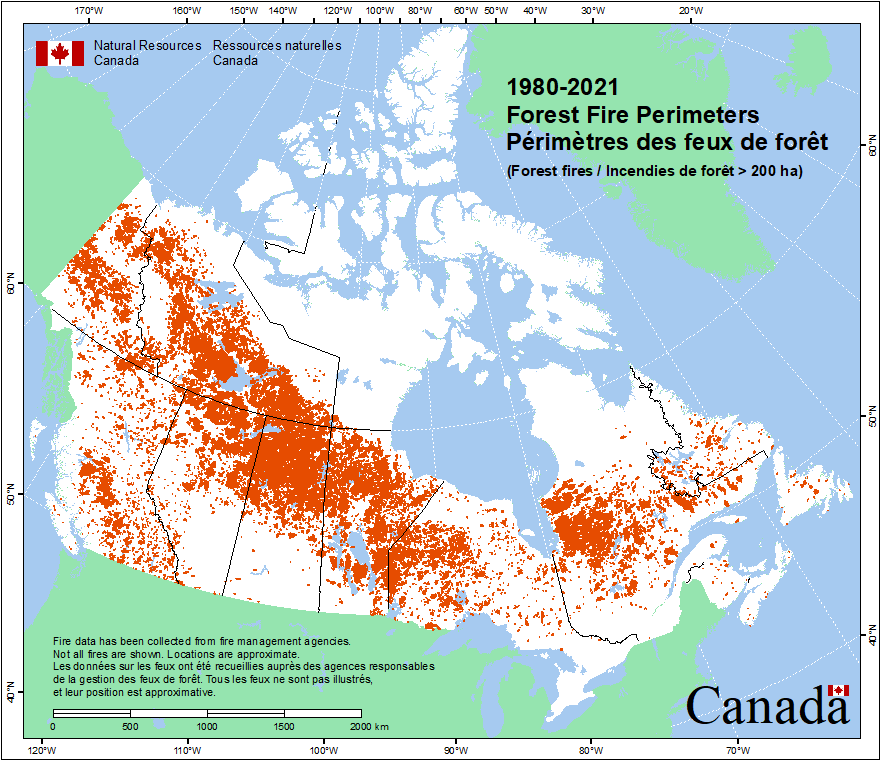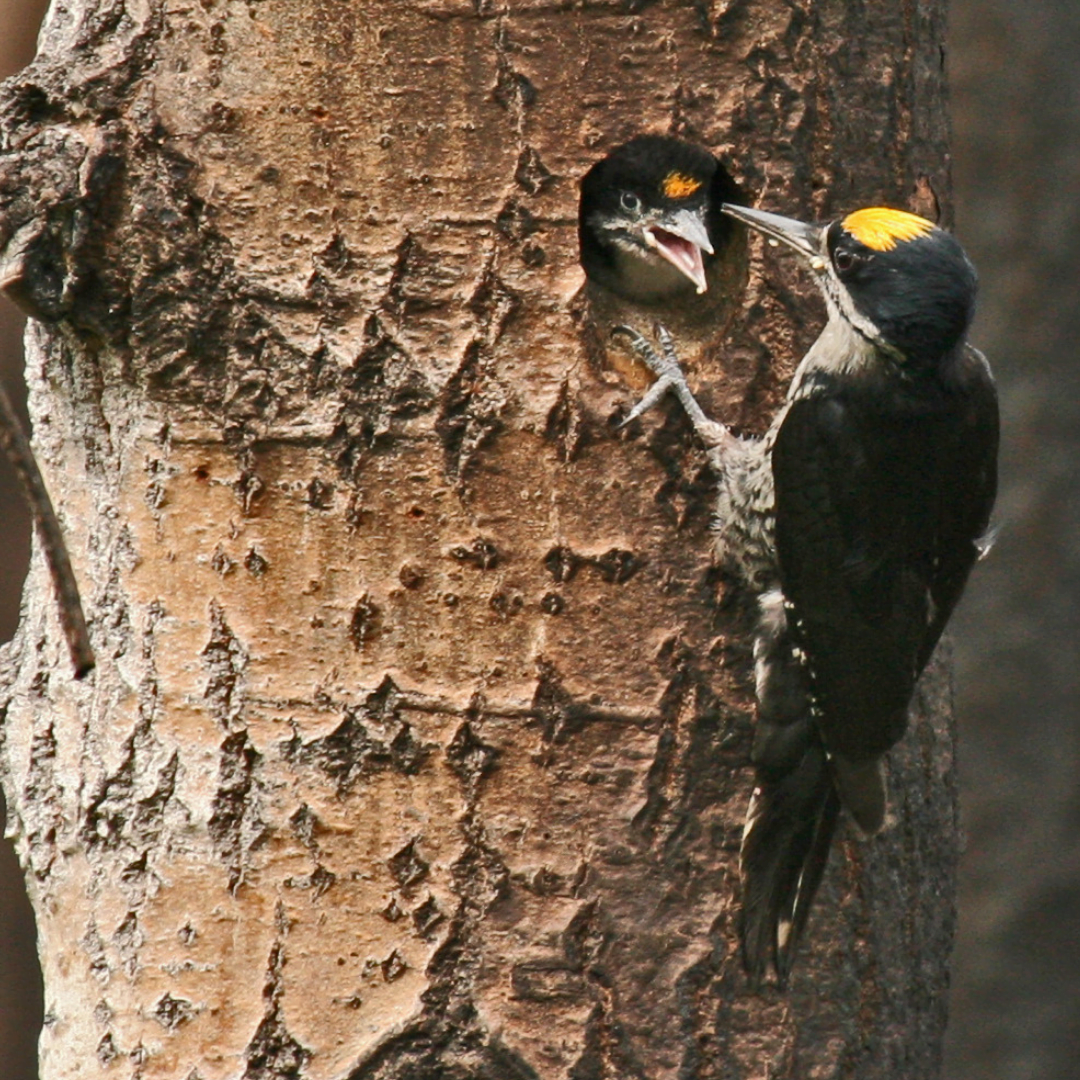Graham Sorenson, gestionnaire de projet – la science au Nord
Comme des ours sortant de leur hibernation, les Canadiens attendent avec impatience le temps chaud de l’été dont ils ont rêvé tout au long de l’hiver. Dès les premiers signes de chaleur, nous sortons dehors! Nous planifions des excursions en camping, nous cherchons des endroits où observer les oiseaux, nous formons des projets de jardinage, et plus encore. Or, ces dernières années, beaucoup d’entre nous ont mis de la crème solaire et enfilé leurs sandales de plage, pour finalement découvrir de la fumée dans l’air. Nous nous inquiétons pour les personnes qui vivent à proximité d’incendies de forêt et nous nous demandons ce qu’il adviendra de leurs maisons. Nous nous interrogeons également sur le sort réservé à la flore et à la faune, dont les oiseaux. Comment seront-ils affectés par l’aggravation des saisons des feux?
La saison des feux de forêt 2024 ne fait pas exception à la règle. Elle a commencé tôt (en février), et le premier grand incendie a entraîné l’évacuation de communautés au début de mai dans le nord-est de la Colombie-Britannique. Par la suite, les incendies de forêt ont continué à se développer dans tout le Canada. En 2023, le pays a vu brûler une superficie de 6 500 000 hectares, soit le double de la plus grande superficie brûlée depuis le début des relevés en 1970. Bien que les feux de forêt soient un processus naturel dans certaines régions, y compris la région boréale, les changements climatiques multiplient leur nombre, leur étendue et leur intensité, ce qui a un impact sur les personnes, les communautés et les espèces sauvages.
Les oiseaux qui nichent dans les forêts boréales du Canada ont toujours cohabité avec les incendies de forêt. Ceux-ci sont un processus écologique naturel et nécessaire qui peut conduire à la création de nouveaux habitats et contribuer à la régénération des forêts en libérant les graines d’arbres de certaines essences, comme le pin gris. Les feux de forêt sont souvent déclenchés naturellement par la foudre et, autrefois, de nombreux peuples autochtones du Canada pratiquaient le brûlage culturel, c’est-à-dire des incendies contrôlés dans le cadre de pratiques culturelles et familiales qui imitent les schémas naturels de brûlage.
Après les incendies, certaines espèces d’oiseaux et d’autres animaux sauvages seront attirées par les paysages modifiés, tandis que d’autres les éviteront. Le Pic à dos noir (page en anglais) est un exemple classique d’une espèce à laquelle le feu profite. Cet impressionnant habitant de la forêt boréale et des montagnes atteint ses plus fortes densités dans les années qui suivent les incendies de forêt, où il se nourrit d’insectes xylophages et crée ses propres cavités de nidification dans les arbres brûlés. Le Moucherolle à côtés olive, notre ambassadeur aviaire de 2024 qui a besoin d’espaces ouverts pour se nourrir d’insectes, est une des autres espèces qui occupent le plus souvent les zones touchées par les brûlis. Parmi les autres espèces d’oiseaux qui exploitent les milieux récemment brûlés, on compte le Merle d’Amérique, le Merlebleu azuré (qui utilise vraisemblablement les cavités creusées dans les arbres par les Pics à dos noir), le Bruant familier, le Mésangeai du Canada et le Pioui de l’Ouest (selon une étude réalisée dans les Territoires du Nord-Ouest; en anglais).

Pic à dos noir. Photo: Donna McKenzie
L’augmentation de la fréquence, de la gravité et de l’étendue des incendies est à l’origine des problèmes rencontrés par les espèces d’oiseaux de la forêt boréale. Des feux fréquents dans les mêmes zones signifient que les forêts n’ont pas le temps d’atteindre les stades de maturité que certaines espèces préfèrent, comme la Paruline tigrée, le Grimpereau brun et la Paruline du Canada. Les incendies les plus violents peuvent également brûler la matière organique au sol, de sorte que la régénération prend beaucoup plus de temps avant que les espèces végétales forestières jeunes ou broussailleuses ne puissent s’y installer. Si certaines espèces peuvent prospérer dans un paysage post-incendie, toutes les espèces sont confrontées à des difficultés lorsque des incendies se produisent, notamment la perte de nids et de jeunes, ainsi que le déplacement, la détérioration physique, voire la mort d’adultes. L’étude de l’impact des feux de plus en plus étendus sur les populations n’en est qu’à ses balbutiements.
Selon la période de l’année, les incendies de forêt peuvent avoir des répercussions supplémentaires et différentes sur les oiseaux. Pendant la migration du printemps, certains peuvent rencontrer des incendies et choisir leur voie migratoire et leur territoire de reproduction de manière à éviter les feux actifs et la fumée. Au milieu de l’été, le feu peut piéger les reproducteurs engagés dans la nidification active (il se peut que certains adultes ne survivent pas à des incendies qui se propagent rapidement), et certains peuvent abandonner leur nid et tenter de se reproduire ailleurs, ou mettre fin à leurs efforts de reproduction et migrer plus tôt que d’habitude. Pendant la migration d’automne, les oiseaux qui sont confrontés au feu ou à la fumée peuvent également être contraints de modifier leurs itinéraires ou leurs comportements pour retourner vers le Sud. Des études récentes (page en anglais) ont permis de mieux comprendre les défis auxquels sont confrontées les espèces migratrices: trajectoires considérablement modifiées entraînant une perte de poids et une mortalité due à un vol prolongé; famine due à un vol prolongé ou à une accumulation de réserves d’énergie inadéquate avant la migration; et peut-être même des impacts directs dus à l’inhalation de fumée en cours de route.
Lorsque nous sortons de chez nous au printemps ou en été et que nous voyons de la fumée dans le ciel, c’est apeurant. C’est angoissant. La lutte contre les changements climatiques est le moyen le plus sûr de résoudre les problèmes liés aux incendies de forêt. Nous vous exhortons à plaider en faveur d’actions climatiques aux paliers local et fédéral. La triste réalité pour beaucoup de nos espèces boréales est qu’elles meurent à petit feu. Il ne s’agit pas seulement des feux de forêt, mais aussi de la perte d’insectes et de la perte d’habitat dans leur aire d’hivernage et des menaces qui pèsent sur elles pendant les migrations. Bien que la plupart de ces problèmes semblent hors de notre contrôle, vous pouvez agir concrètement près de chez vous. En plus de plaider en faveur d’une action climatique, essayez de créer des voies de migration plus sûres là où vous vivez: créez un habitat naturel dans votre propriété ou dans des zones communautaires, réduisez les collisions des oiseaux avec les fenêtres et gardez les chats à l’intérieur. Ces petits gestes sont importants.

La Base nationale de données sur les feux de forêt du Canada est alimentée depuis plusieurs sources. Ces données, fournies par les agences responsables de la gestion des feux de forêt au pays (des provinces et territoires, et Parcs Canada), comprennent la position géographique (données ponctuelles) et le périmètre (données polygonales) des feux. La base comprend des données sur les incendies de toutes les tailles, mais seulement ceux dont la taille finale dépasse 200 hectares sont montrés sur la carte ci-dessus; ces incendies représentent un faible pourcentage de l’ensemble des brasiers mais ils sont responsables de la majeure partie de la superficie brûlée, généralement plus de 97%.

La région de la forêt boréale est délimitée en vert sur la carte ci-dessus. Au Canada, cette vaste région s’étend sur 5 000 kilomètres de Terre-Neuve-et-Labrador en passant par les régions centrales du pays et au nord-ouest jusqu’au Yukon. Plus de 300 espèces se reproduisent dans la région, comptant des milliards d’oiseaux. Notez le chevauchement entre les périmètres de feux de forêt et la forêt boréale.
Oiseaux Canada étend et concentre ses efforts sur la conservation de la forêt boréale et de l’Arctique par le biais de son Programme de recherches dans le Nord, qui a pour objectifs de soutenir la surveillance, d’utiliser les données pour appuyer les mesures de conservation et de renforcer les capacités dans le Nord, tout en tenant compte des intérêts des communautés autochtones et nordiques.

